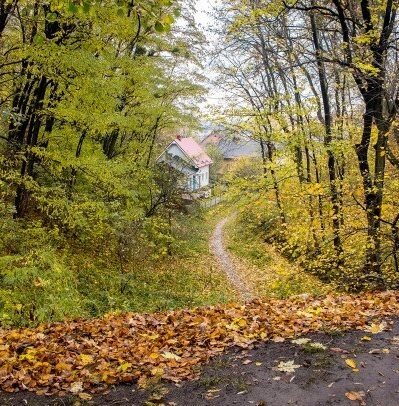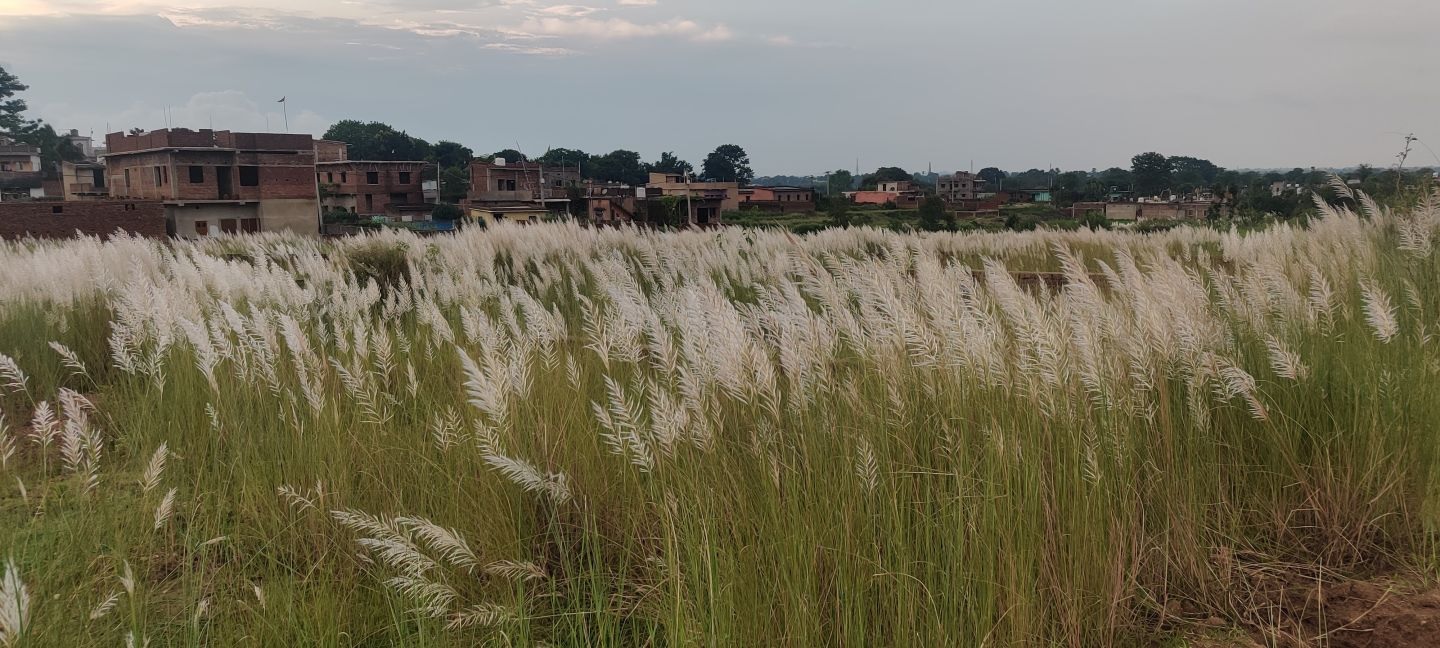Ecosystems can be categorised into two broad categories: natural and artificial. Natural Ecosystems are those ecosystems that operate by themselves under natural conditions. These ecosystems are further categorized as Terrestrial and Aquatic Ecosystems. Terrestrial ecosystems relate to lands, whereas Aquatic ecosystems relate to fresh or marine water. Freshwater ecosystems may be Lotic or Lentic. Lotic are running water ecosystems like springs, streams or rivers, whereas Lentic Fresh Water Ecosystems may be found in standing waters of lakes, ponds, pools, puddles, ditches, swamps, etc. Marine Ecosystems are found in marine waters of salt lakes, seas, oceans and estuaries. Artificial Ecosystems are man-engineered ecosystems like crop fields, artificial ponds and lakes, aquaria, fish ponds, and abandoned mines reclaimed as lakes or water bodies for recreation.
Major Types of Ecosystems
I. TERRESTRIAL ECOSYSTEM
The biosphere is itself a vast ecosystem that incorporates all the small ecosystems. However, the biosphere may have different types of physical conditions, communities of plants and animals, and climatic conditions in its different zones. Given these facts, ecosystems found in different biosphere zones are studied separately. Let’s discuss some major ecosystems found in different zones of the biosphere.
A. FOREST ECOSYSTEM
Naturally, growing plant communities that occupy an extensive land area are called forests. It consists of dominant species of trees associated with herbs and shrubs and an ecosystem; a forest is very complicated. This is so because it contains a variety of producers, consumers, and decomposers. There is tough competition for light and space. The tall trees enjoy maximum sunlight and tend to block it against going to lower plants growing on the forest floor. Lower plants, on the contrary, affect the organic contents of the soil and help them obtain the maximum amount of nutrients from the soil.
Composition of a Forest Ecosystem
Like all the biosphere ecosystems, a forest ecosystem comprises biotic and abiotic components. Among biotic components, trees, shrubs and ground vegetation act as producers where, as consumers, they may be primary, secondary and tertiary. Leaf hoppers, bugs, spiders, beetles, ants and flies; and big animals like elephants, deer, nilgai, squirrels, moles, and rabbits are primary consumers in a forest ecosystem. Vast varieties of birds, lizards, snakes, foxes, etc., act as secondary consumers in this ecosystem. Carnivores like tigers, lions, panthers and others act as tertiary consumers. Microorganisms, like numerous species of soil fungi, parasitic fungi, bacteria, ants, earthworms, etc., act as principal decomposers in a forest ecosystem. Abiotic components in a forest include organic and inorganic substances found in the soil of the forest floor and climatic factors.
B. GRASSLAND ECOSYSTEM Grass—
Plants have better adaptation abilities, so grasses can grow everywhere; grassland ecosystems are found everywhere. The composition of this type of ecosystem largely depends upon the climate and soils of the area in which the ecosystem is located.
The grassland ecosystem has grasses as major producers. However, herbs and shrubs are also found in this type of ecosystem. Primary consumers in this ecosystem include herbivores, like deer, mice, sheep, rabbits, buffaloes, cows and numerous species of insects. Snakes, lizards, foxes, jackals, etc., are secondary consumers, while hawks, owls, etc, are tertiary consumers. Various types of saprophytic fungi like Penicillium, Cladosporium, Dermatophyton, Aspergillus, Fusarium, Rhizopus, and Mucor, and numerous varieties of bacteria and termites serve as important decomposers of this ecosystem. Abiotic components of grassland ecosystems include various organic and inorganic substances that usually remain present in the soil, atmospheric gases, water and other weather factors.
C.DESERT ECOSYSTEMS
A desert is a land area characterized by less than 254mm of annual rainfall and a high average temperature. In a desert ecosystem, the evaporation rate exceeds the rainfall rate, and nights remain very cold, contrary to very hot days.
Producers in a desert ecosystem comprise grasses, thorny bushes, some tree species like Acacia, Zizyphus etc. and many species of succulents like Aloe, Euphorbia, Asparagus, Agave, Tradescantia and cacti etc. Consumers in this ecosystem comprise Primary Consumers like rats, rabbits, goats, sheep, camels, and many species of seed-eating birds. Secondary consumers include reptiles, insects, insectivorous birds, and owls. Hawks and other predatory animals act as tertiary consumers in this ecosystem. Ants, termites, bacteria and some saprophytic fungi are found here as principal decomposers. Abiotic components in this ecosystem include fertile soils because very little water moves through them to carry away the nutrients. The accumulation of salts in the desert soil is high due to excessive evaporation. Air, intense temperature, sunlight, and organic and inorganic substances are principal abiotic components of the desert ecosystem.
II. AQUATIC ECOSYSTEM
The aquatic ecosystem comprises a water ecosystem and a marine ecosystem.
- Fresh Water Ecosystem
This ecosystem comprises running water systems (Lotic) and stagnant water systems (Lentic). Producers in the running or Lotic type of ecosystem comprise species of algae and plants that grow on embankments. Various varieties of molluscs, tadpoles, and insects are primary consumers of this ecosystem, whereas fish, crabs, and crustaceans are secondary consumers. Numerous species of bacteria and a few species of fungi act as decomposers in this ecosystem.
The Lotic type of freshwater ecosystem comprises ponds, lakes and ditches. A pond may be divided into three distinct zones- Littoral, Limnetic, and Profundal. The Littoral is a shallow water zone, and the principal producers are rooted plants like Sagitaria, Ranunculus, and Cyprus. Some molluscs and insects are primary consumers, whereas snakes, frogs, etc., are secondary consumers of this zone. The Limnetic zone is a well-lighted and open zone. Phytoplankton, algae and free-floating plants are the principal producers of this zone. Varieties of insects and tadpoles act as primary consumers of this zone. Profundal is the darkest zone of a pond or lake, and it usually does not contain producers. Tortoises and big fishes go for rest in this zone. However, this zone teams up with vast varieties of decomposers who decompose dead body parts of plants and animals deposited in the bottom sediment.
- Marine Ecosystem
Marine ecosystems include oceans and salt lakes. They are also known as Open Sea, Coastal, and Estuarine Ecosystems.
The open sea ecosystem is found beyond the shore or the continental shelf. Some important producers of this region are diatoms and brown and red algae. Crustaceans, small fishes, and molluscs are remarkable primary producers of this region. Big fish species are secondary consumers of this region. Decomposers are mostly found on the ocean floor.
The Coastal Ecosystem covers the area of the continental shelf. It is subdivided into intertidal, littoral and neritic zones. The intertidal zone is the area where sea waves come and go regularly. The littoral zone is the ocean floor, whereas the neritic zone is the shore area, always covered with shallow water. Major producers of the coastal ecosystem are phytoplankton, red algae and sea-weeds. Consumers of this area are Zooplankton, unios, and small fish. Seals, crustaceans, turtles, and visiting big fish are other consumers in this region. Numerous species of seabirds act as top consumers in this region. Bacteria, fungi, insects, and some species of birds act as decomposers in this ecosystem.
Estuaries are ecosystems found in the junction areas of soft and marine waters. This ecosystem remains full of producers, consumers, and decomposers. Various species of seaweeds, algae, and other plants function as producers, whereas zooplankton, small crustaceans, larvae, tadpoles, crabs, tortoises, various fish species, etc., are principal consumers of this region. Many species of seabirds act as top consumers, whereas numerous species of bacteria, fungi, and insects act as decomposers in an estuary.




